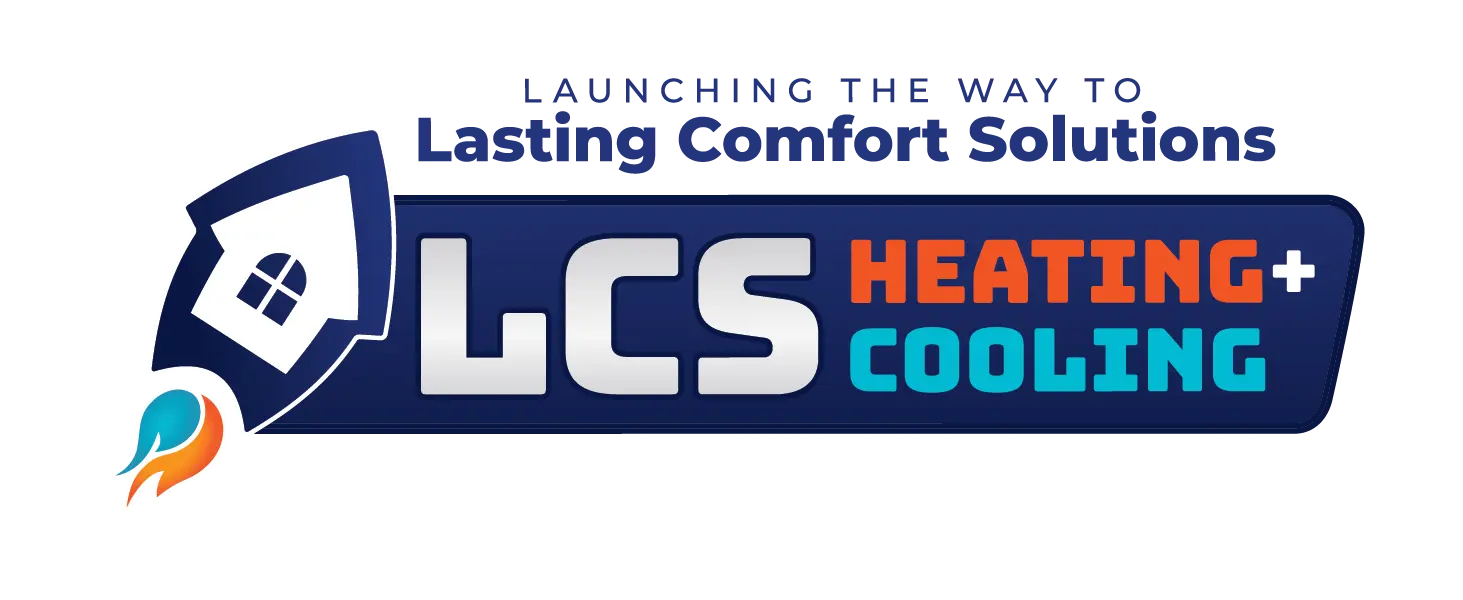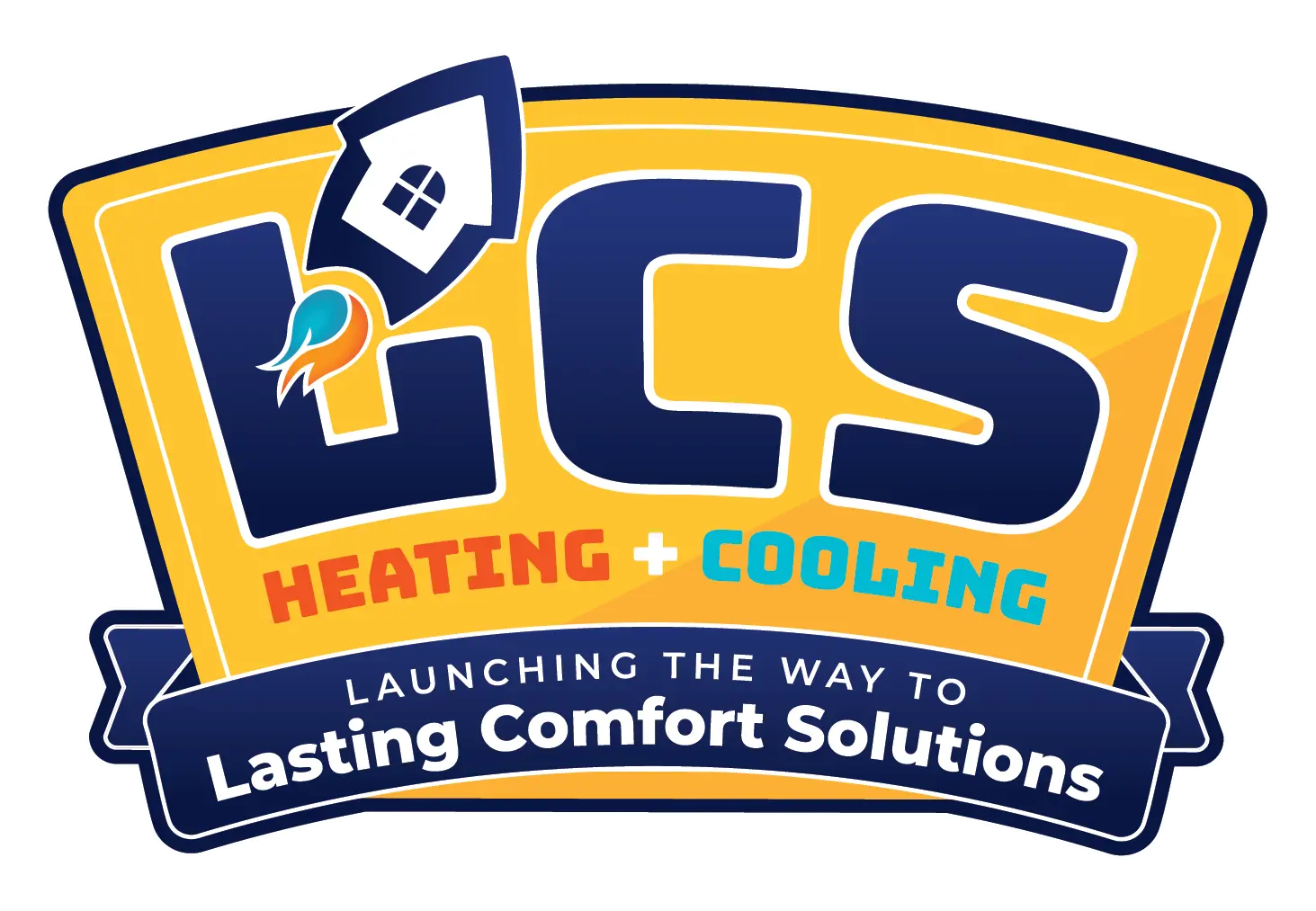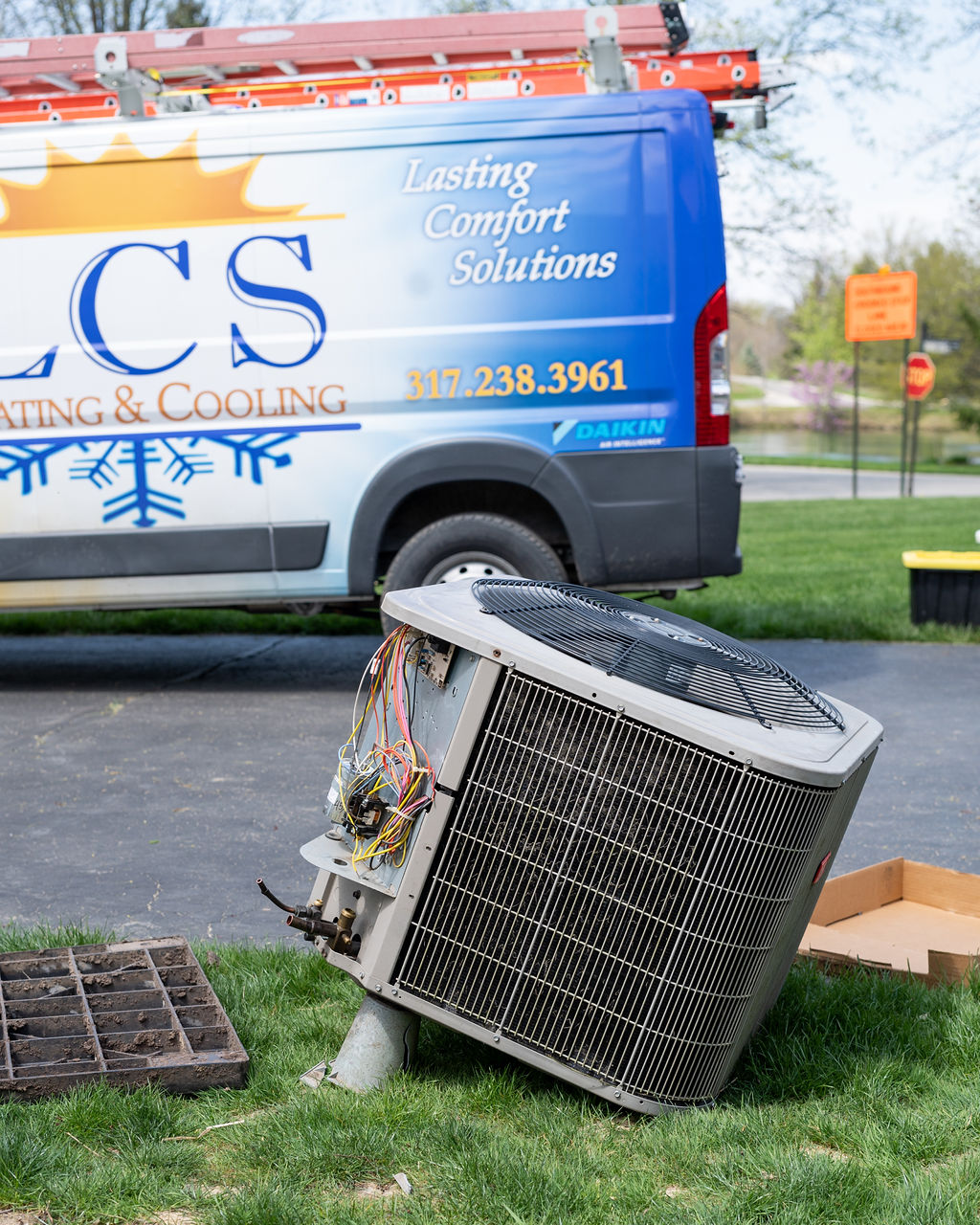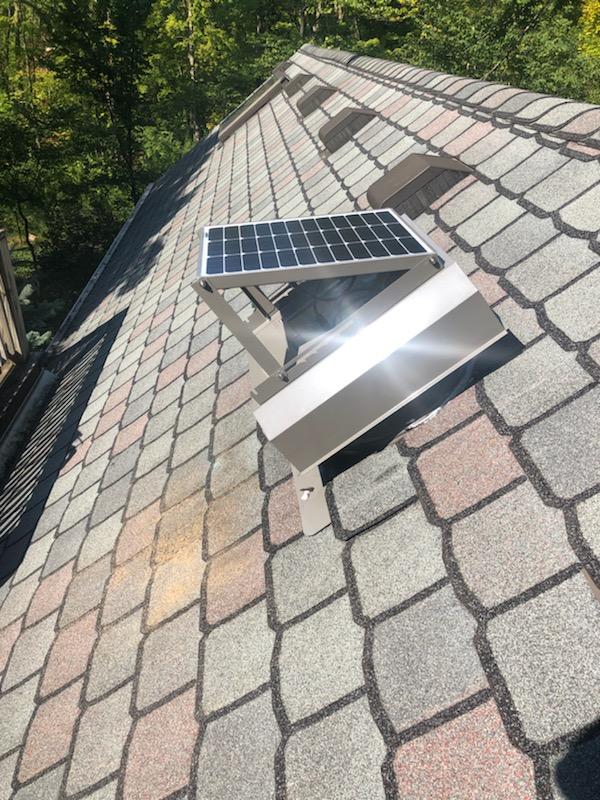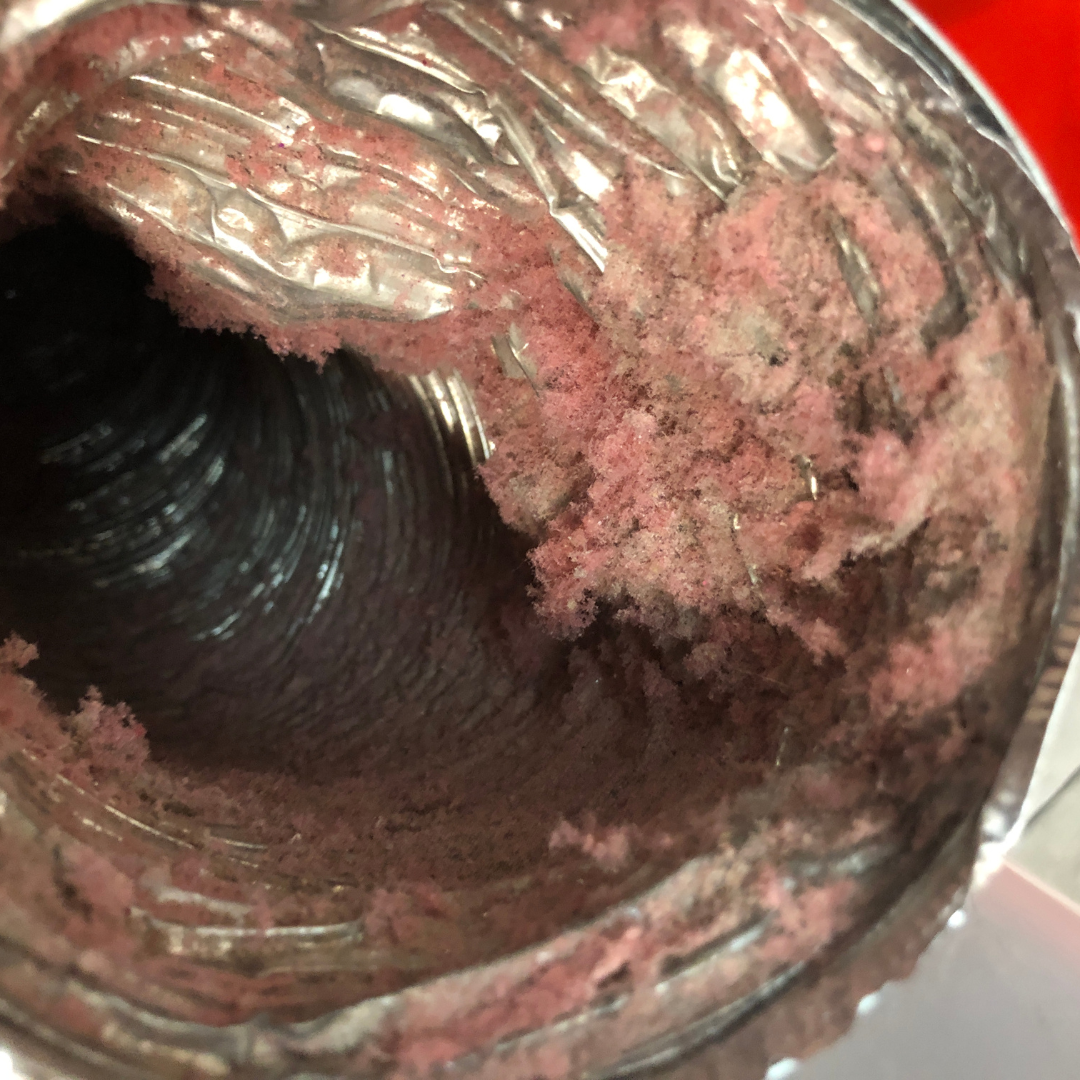Protect Your HVAC Investment with a Surge Protector!
Storm damage to your home can come in multiple forms, and one you may not think about is the damage to your HVAC. Owners Renee and Travis learned firsthand: so busy taking care of other peoples’ homes, they didn’t make their own home a priority and have a surge protector installed. All it took was one lightning strike to take out their communicating thermostat and furnace circuit board. Since they had a variable speed, communicating system, these components are costly to replace. And, since this type of damage wasn't covered under warranty (and the rest of their system was out of warranty), they ended up having to replace their entire system.
In Indianapolis, where weather conditions can be unpredictable, ensuring the longevity and efficiency of your heating and cooling system is paramount. At LCS Heating and Cooling, we understand the importance of safeguarding your HVAC investment against unexpected power fluctuations or surges. Even when units are under warranty, acts of nature like lightning are not covered and can lead to costly repairs or replacement! That's why we advocate for the use of specialized surge protectors designed specifically for HVAC units.
The Silent Threat: Power Surges
Power surges are sudden increases in electrical voltage that can wreak havoc on your HVAC system. These surges can be caused by lightning strikes, utility grid switching, or even large appliances cycling on and off in your home. While you may have surge protectors for your computers and electronics, your HVAC unit is often overlooked in this regard.
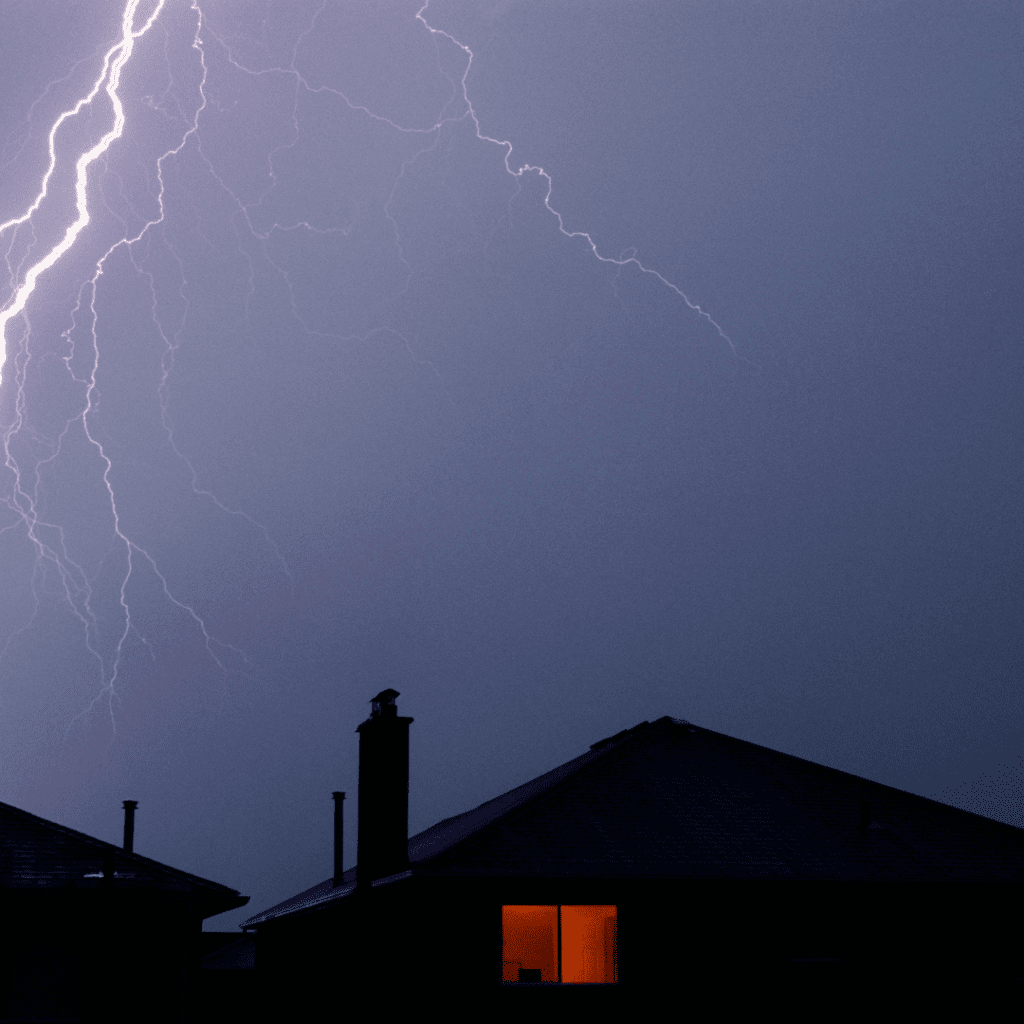 The Cost of Neglect
The Cost of Neglect
Without adequate protection, a power surge can damage sensitive electronic components within your HVAC system, leading to costly repairs or even an early “death” of your system. Technology is more advanced than what it was several years ago, which makes the components in our systems even more vulnerable...and more expensive. Imagine facing sweltering heat or freezing temperatures due to a malfunctioning heating or cooling system, all because of a preventable surge-related issue. The inconvenience and expense of such a situation underscore the importance of proactive measures.
The Solution: Specialized Surge Protectors
Unlike standard surge protectors, which are designed for typical household electronics, specialized surge protectors for HVAC units offer enhanced protection tailored to the specific needs of your heating and cooling system. These devices are equipped with features such as higher joule ratings and noise filtration capabilities, ensuring comprehensive defense against power surges.
Benefits of HVAC Surge Protection
-
Extended Lifespan:
By shielding your HVAC system from damaging power surges, you can prolong its lifespan and minimize the need for costly repairs or replacements.
-
Improved Efficiency:
A surge-protected HVAC unit operates more efficiently, delivering optimal performance and energy savings while reducing wear and tear on components.
-
Peace of Mind:
With a specialized surge protector in place, you can rest easy knowing that your HVAC investment is safeguarded against unforeseen electrical disturbances.
Trust LCS Heating and Cooling for Expert Advice
At LCS Heating and Cooling, we prioritize the comfort and satisfaction of our Indianapolis customers. As a trusted local heating and cooling company, we offer expert advice on HVAC surge protection and other essential services to ensure your home remains comfortable year-round.
Surge Protection in the Indianapolis Area
Don't leave your HVAC system vulnerable to the dangers of power surges. Invest in specialized surge protection to safeguard your valuable heating and cooling equipment. Contact us today to learn more about our comprehensive HVAC services and how we can help protect your home comfort investment. With LCS Heating and Cooling, your peace of mind is our priority.
Decoding HVAC Jargon: Emergency Heat, Auxiliary Heat, and Backup Electric Explained!
When temperatures drop, we understand the importance of a reliable heating system to keep you warm and cozy. But have you ever scratched your head trying to figure out the difference between emergency heat, auxiliary heat, and backup electric in your HVAC system? Don't worry, you're not alone! We’re going to break it down in simple terms to help you make smart choices this winter.
Auxiliary Heat: The Trusty Sidekick
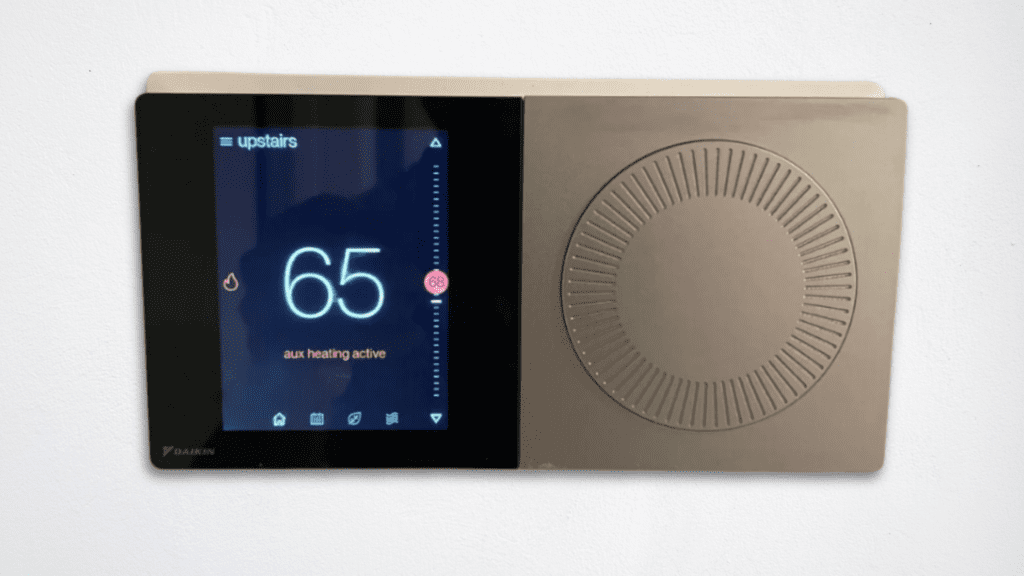 First, let's talk about auxiliary heat – the trusty sidekick to your electric systems that are heat pump and electric furnace. In most cases, auxiliary heat works alongside your heat pump to provide that extra boost when needed. Think of it as your HVAC system's way of saying, "I've got your back!"
First, let's talk about auxiliary heat – the trusty sidekick to your electric systems that are heat pump and electric furnace. In most cases, auxiliary heat works alongside your heat pump to provide that extra boost when needed. Think of it as your HVAC system's way of saying, "I've got your back!"
Standard heat pumps are efficient down to about 35 degrees outside. When it gets colder than that, they have a hard time keeping up on their own, so the electric furnace kicks in to assist. This furnace uses electric resistance coils to help maintain your desired indoor temperature. The colder it gets outside, the more the electric furnace runs to assist. While the electric furnace is running, some thermostats will show AUX.
Auxiliary heat is not efficient, however, so expect utility bills to be higher when it's really cold outside. However, this is some potential relief in sight: more efficient heat pumps called cold climate heat pumps have been developed more recently. They are efficient down to about 5 degrees outside, utilizing less backup electric from your electric furnace. This is great news for your utility bills!
Emergency Heat: Your HVAC Superhero
Imagine this scenario: it's the coldest night of the year, and your heating system is working overtime to keep up. Suddenly, something goes wrong—your heat pump struggles. Emergency heat to the rescue!
Emergency heat is a superhero because if a heat pump breaks down, you can use it to generate heat in your home. Keep in mind that switching the thermostat to emergency heat should only be done if you know the heat pump is not working properly. Like auxiliary heat, emergency heat can be expensive to run if your home is fully electric, so you'll want your heat pump checked out immediately.
Overall, in Indianapolis where winters can yo-yo from mild to downright harsh, having a reliable emergency heat source, like a gas furnace, ensures your home stays warm and toasty even on the coldest nights.
Backup Electric: Another Name for the Same Option
Last but not least, let's talk about backup electric. This feature is like the contingency plan in case your primary heating source experiences a hiccup. For example, if your heat pump malfunctions, backup electric heat strips can step in to keep things warm while you schedule a repair.
While backup electric heat is a reliable Plan B, it's essential to use it sparingly. Electric heating can be more expensive than other options, so consider it your safety net rather than your go-to heating source.
The Difference
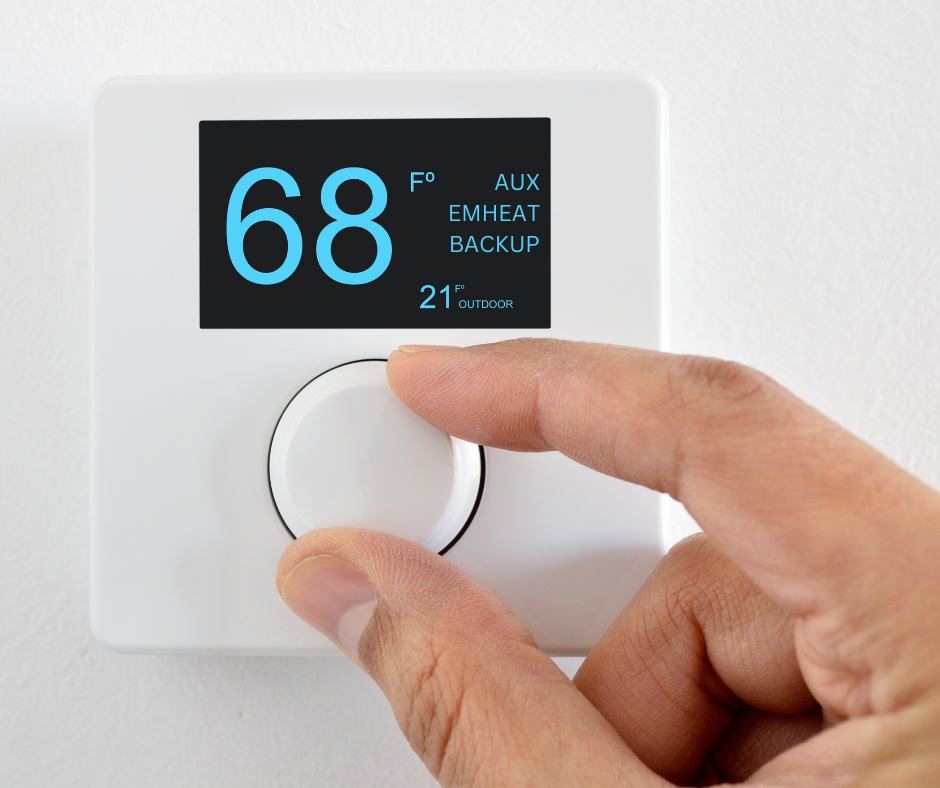 So what’s the real difference between these three? In case you haven’t figured it out yet, emergency heat and auxiliary heat are technically the same thing: with both, your electric furnace is providing heat. However, with auxiliary heat, the electric furnace is assisting your system. In emergency mode, the electric furnace is running alone because the heat pump is locked out.
So what’s the real difference between these three? In case you haven’t figured it out yet, emergency heat and auxiliary heat are technically the same thing: with both, your electric furnace is providing heat. However, with auxiliary heat, the electric furnace is assisting your system. In emergency mode, the electric furnace is running alone because the heat pump is locked out.
And now you might guess that backup electric is just another term for emergency heat, auxiliary heat, or electric furnace!
So, while there’s not a huge difference between the three, it’s important that you know what these phrases mean in order to make informed decisions about your comfort during the coldest days of Indianapolis winters.
At LCS Heating and Cooling, we're here to ensure your HVAC system is in tip-top shape, ready to tackle whatever Mother Nature throws your way. If you have any questions or need assistance, contact us today – we're always happy to help our fellow Hoosiers stay warm and cozy! Stay toasty, Indy!
LCS Heating and Cooling: Launching the Way to Lasting Comfort Solutions!
When LCS started back in 2005, owners Renee and Travis were focused on working hard and giving good customer service. Over the years, those two things have not changed, but so much more has. In this blog, we'll take you through our brand refresh journey, showcasing the heart and soul that has gone into making LCS more than just a heating and cooling company.
Our Roots
Back in 2005, Travis and Renee didn't have a grand vision. They just wanted to provide the best heating and cooling services in Indianapolis. When it came time to choose a name and a logo, they didn’t want anything too fussy or over-the-top. LCS was just an abbreviation of their last name and the simple sun and snowflake LCS logo, designed by a friend, was simple and fitting for the company at the time.
Evolution of LCS
As LCS grew, so did the aspirations. Travis and Renee wanted LCS to represent more than just a family name, so the tagline "Lasting Comfort Solutions" was born. This phrase became the heartbeat of our company, reflecting our dedication to making people comfortable and happy. It also symbolized our commitment to building lasting relationships and providing innovative solutions.
Consistent Logo and Tagline
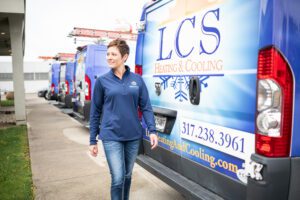 While our company colors and van wraps may have changed over the years, our LCS logo and tagline have remained consistent. The simple sun and snowflake represented what Travis and Renee started. They became symbols of reliability, trust, and the exceptional service we strive to deliver. But over time, LCS has come to be more than what it was at the start. The amazing team of professionals at LCS truly makes our company what it is. For our clients, the experience we strive to provide is beyond the 5 stars expected. It's beyond just making sure a furnace or air conditioner work. So how did we make sure our brand reflected this desire to go above and beyond?
While our company colors and van wraps may have changed over the years, our LCS logo and tagline have remained consistent. The simple sun and snowflake represented what Travis and Renee started. They became symbols of reliability, trust, and the exceptional service we strive to deliver. But over time, LCS has come to be more than what it was at the start. The amazing team of professionals at LCS truly makes our company what it is. For our clients, the experience we strive to provide is beyond the 5 stars expected. It's beyond just making sure a furnace or air conditioner work. So how did we make sure our brand reflected this desire to go above and beyond?
The Journey to Rebrand
Our team had grown into a powerhouse of professionals, and our client experience had soared beyond expectations. The sun and snowflake, though sentimental, no longer captured the essence of LCS. It was time to go to the drawing board… literally.
Introducing the New Look
And so, after much contemplation and excitement, we are proud to unveil our refreshed brand! LCS is now "Launching the Way to Lasting Comfort Solutions." Our solutions and options have reached new heights—all the way to the moon! The LCS client experience is not just 5 stars; it's out of this world.
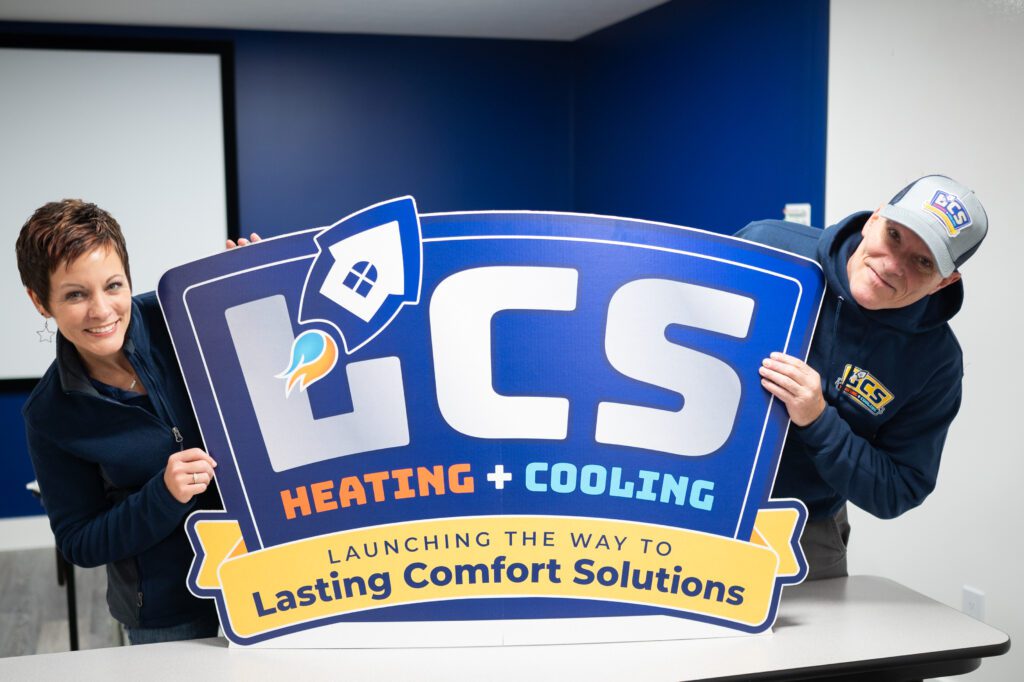
As LCS Heating and Cooling steps into a new era of comfort, innovation, and exceptional service, we hope you’ll be along for the ride. Our commitment to lasting comfort solutions is stronger than ever, and we invite you to experience the difference that defines LCS. Welcome to the future of comfort!
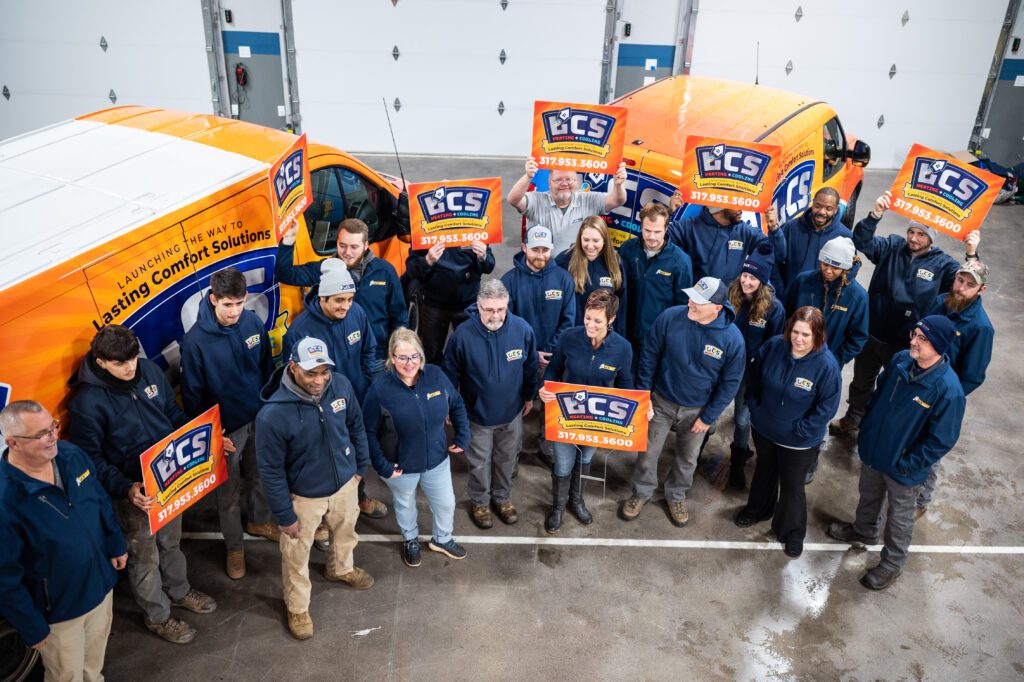
Why Isn’t My Furnace Working? Surprising Reasons Your Furnace Might Be On the Fritz
Winter is upon us, and there's nothing worse than realizing your trusty furnace has decided to take an unexpected vacation. While we all know the usual suspects like a dirty filter or a malfunctioning thermostat, there are some bizarre furnace foes that might just leave you scratching your head. So, let's dive into the unexpected culprits that can bring your cozy haven to an icy standstill.
Feathered Friends in the Flue
Believe it or not, birds seeking warmth and shelter might find their way into your furnace flue. But a cozy spot for them can quickly become a headache for you. The obstruction not only hinders proper ventilation but can also pose a safety risk. Regularly inspecting your flue for any unexpected guests is a simple step to keep your furnace running smoothly.
 Critter Chaos
Critter Chaos
Even if they’re not in your flue, you might want to check your heat pump for signs of critters. Chipmunks, squirrels, and other small animals have been known to chew wires on heat pumps!
Fall Foliage
Didn’t get around to yard clean up this year? Those leaves could be blocking your furnace’s intakes and exhaust pipes, disrupting the combustion process. It’s a good idea to get out and check for a buildup of leaves and keep that area clear!
Snow Sneaking In
Winter wonderlands are beautiful until they start affecting your furnace's performance. Heavy snowfall can have the same impact as leaves mentioned above. Make it a habit to check for snow accumulation around your furnace after a snowstorm and clear it away promptly.
Thermostat Tango
Sometimes, it's not the furnace but the thermostat that's playing tricks on you. Check the thermostat settings to ensure they match your desired temperature. Additionally, if the thermostat is located near a drafty window or a heat source, it might give inaccurate readings, leading to heating issues.
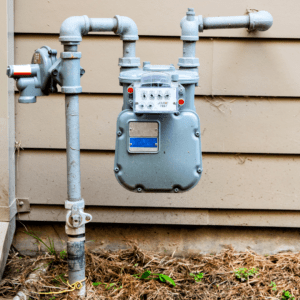 Fuel Fiascos
Fuel Fiascos
It might seem obvious, but sometimes the simplest things are the ones we overlook. If you have a gas furnace, check to make sure your fuel supply is running freely and the gas meter is working. Issues with the gas line can be easily avoided with routine checks.
Furnace Repair in the Indianapolis Area
While a dirty filter and a malfunctioning thermostat are commonly recognized as potential furnace saboteurs, the unexpected culprits mentioned above might just be the hidden reasons behind your heating woes. Regular maintenance and keeping an eye out for these unusual suspects can help ensure your furnace stays reliable, keeping you warm and cozy all winter long. If you’re still not sure why your furnace is malfunctioning, contact us today!
Stay toasty!
3 Reasons Every Central Indiana Home Needs a Water Descaler
If you've ever dealt with stubborn water stains on your faucets, battled with soap scum in the shower, or wondered if your appliances are secretly plotting against you, we feel your pain. But fear not, because we're about to dive into a simple solution to these everyday woes: installing a water descaler in your home.
How is a water descaler different from a water softener, you might be asking? A water softener will remove hard minerals from your water, but a water descaler will prevent hard minerals from forming deposits.
1. Bid Farewell to Annoying Water Stains.
 Let's talk about those pesky white spots on your faucets, showerheads, and dishes. They're not evidence of your lackluster cleaning skills; it's hard water's doing! Central Indiana is known for having hard water, which means it's loaded with minerals that leave these unsightly deposits everywhere they go.
Let's talk about those pesky white spots on your faucets, showerheads, and dishes. They're not evidence of your lackluster cleaning skills; it's hard water's doing! Central Indiana is known for having hard water, which means it's loaded with minerals that leave these unsightly deposits everywhere they go.
A water descaler swoops in like your cleaning superhero. It zaps those minerals, preventing scale buildup, and keeps your plumbing fixtures and dishes looking spotless. No more vigorous scrubbing or frustration—it's a win for you and your cleaning schedule.
2. Appliances Love It (And So Will Your Wallet).
Your appliances are like the unsung heroes of your home, tirelessly working in the background to make life easier. But hard water can be their arch-nemesis, making them less efficient and shortening their lifespans. That's where a water descaler steps in to save the day.
Without bulky mineral deposits, your appliances run more smoothly and efficiently. Your whole home dehumidifier, humidifier, water heater, dishwasher, and washing machine will work like a dream, using less energy and lasting longer. Translation: more money in your pocket. You can use that extra cash for something more fun than appliance repairs!
3. Say Hello to Softer Skin and Silkier Hair.
 Hard water doesn't stop at your faucets; it also has a knack for wreaking havoc on your skin and hair. If you've ever felt like you were in a never-ending battle against dry skin and dull hair, it's time for a change.
Hard water doesn't stop at your faucets; it also has a knack for wreaking havoc on your skin and hair. If you've ever felt like you were in a never-ending battle against dry skin and dull hair, it's time for a change.
A water descaler transforms your bathroom into a personal spa. No more battling soap scum or using excessive shampoo—just a refreshing shower experience. Plus, you'll use fewer skincare products, saving you both money and bathroom clutter. Don't like that slippery, soapy feel of your skin in the shower that comes with a water softener? The descaler is a great solution for this too!
Water Descaler Installation in the Indianapolis Area
In a nutshell, Central Indiana's hard water is no match for a water descaler. It's a simple solution that keeps your home cleaner, appliances happier, and your wallet a little fatter. Say goodbye to stubborn water stains, high repair bills, and beauty woes. Installing a water descaler might just be the secret to smoother living in the heart of Indiana.
If you’re ready to say goodbye to mineral deposits and build up impacting your home, contact us today! For a limited time, enjoy 30% off regular pricing when you have LCS install an Aprilaire Whole-Home Humidifier and Flow-Tech Anti-Scale System!
Planning for HVAC Replacement
Why is it that your HVAC goes out when you least expect it… and may be least prepared to replace it? We hear the sentiment over and over again: “This is the worst timing!” “I was hoping to get through the summer!”
We hate to see emergency HVAC replacements that put our customers in tight spots. That’s why we always recommend trying to plan ahead for HVAC replacements. Be prepared and not caught off-guard when your system bites the dust!
The Power of Planning
If your HVAC system is more than 9 years old, it’s probably time to start planning for a replacement. A good place to start is by evaluating your current system's efficiency and overall performance. Consider any recurring issues, rising utility bills, or uneven heating/cooling in different areas of your home or building.
With this information, set clear goals for your future HVAC investment. Are you seeking better energy efficiency, improved indoor air quality, or enhanced comfort? Outline your priorities to guide you in making informed decisions.
Once you’ve determined what’s working and what’s not with your current setup, consider giving us a call to find out what options you have for replacement. We can help you consider the system you might want and the costs you’ll want to save toward.
 Saving for the Future
Saving for the Future
Investing in an HVAC system is a financial commitment that can set you back if you’re not prepared.
Consider creating a dedicated savings account and contribute regularly to it. One tip is to set up an automatic payment into this savings account on payday. Even just $20 a paycheck can help you build toward your savings goals. By saving specifically for this investment, you can minimize the need for loans or putting your purchase on a credit card, ultimately reducing the overall cost.
Additionally, there are also potential financial assistance programs or tax incentives that may be available for energy-efficient HVAC installations.
Seizing the Right Time: Specials and Deals
Once your savings start to grow, keep an eye out for specials and deals. We regularly have promotions, both from our manufacturers and ones that we offer just for our customers. Keep an eye out for promotions during specific times of the year, such as the transition between seasons or during holiday sales events.
Maintenance: A Crucial Component of Your Investment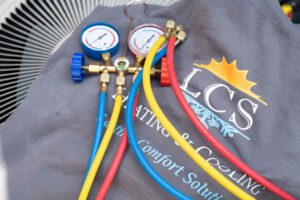
Investing in your HVAC system doesn't end with its installation. Proper maintenance is key to the longevity, efficiency, and reliability of your system. Regularly scheduled maintenance can prevent costly breakdowns, optimize performance, and extend the life of your system.
Our tip here: Create a maintenance schedule and stick to it. You can do some tasks on your own, like changing air filters, but there are other tasks you’ll want to leave to an expert. Contact us for annual or bi-annual inspections and tune-ups to help your investment really pay off in the long run.
HVAC Replacement in the Indianapolis Area
If you’re ready to begin the process of upgrading your HVAC, contact us to learn more and get a quote for installation!
Remember: a well-maintained HVAC system not only saves you money but has a better chance to live a long life. So, take the time to research and invest wisely in a system that aligns with your needs. With careful planning, saving, and commitment to maintenance, you'll enjoy the rewards of a lasting comfort solution for years to come!
How to Address Hot and Cold Spots in Your Home
Your upstairs is hot. Your downstairs is freezing. You can’t find a single spot in your home where you feel comfortable. If this sounds familiar, you may have a problem with hot and cold spots.
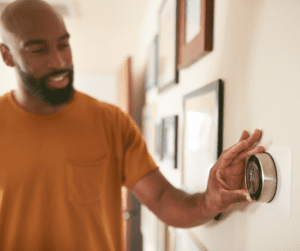 Why do I have hot and cold spots in my home?
Why do I have hot and cold spots in my home?
There are several factors that cause hot and cold spots in a house. One of the most common causes is improper ductwork design. Other possible causes include poor insulation and air leaks, which can allow hot or cold air to enter or escape through cracks and gaps in the walls, windows, or doors. Other factors that can contribute to hot and cold spots include problems with the HVAC system and even the position and orientation of your home in relation to the sun.
Do I need to replace my HVAC?
The good news is that you likely don’t have to replace your HVAC system to address hot and cold spots in your home. There are many possible solutions, depending on your home setup, to fix the problem.
What can I do to fix hot and cold spots in my home?
Depending on the specific issue in your home, resolving hot and cold spots can take different forms.
- Zone Your Home: What does this mean? Most of the time your home is on a single thermostat in one zone. When we zone your home, we create multiple zones, each with its own thermostat. This allows you to control the temperature independently in each zone or area of your home. Some homes can be zoned, but some cannot. If you’re not sure if zoning would be an option for your home, contact us!
- Ductless Mini-Split: A mini-split can be a great solution if you can’t zone your home, or if a smaller area of your house is impacted. This option involves installing a system that’s separate from your traditional furnace and air conditioner. A mini-split has an outdoor unit, along with one or multiple indoor heads. This unit is controlled by its own thermostat, giving you complete control over the temperature in that space. Mini-splits are especially great for large bedrooms, bonus rooms, and sunrooms.
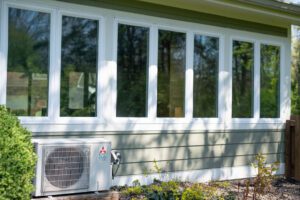
Outside of these solutions, there are some additional steps you can take that may not be true fixes but can alleviate the problem a bit by closing the gap from one end of your home to the other or between your upstairs and downstairs temperatures.
- Solar-Powered Attic Fan: While it can’t completely resolve hot and cold spot issues, a solar-powered attic fan can help keep your attic cooler, which in turn can keep the floor directly below the attic cooler. There are no long-term costs associated with a solar-powered attic fan since it runs on solar. As an added bonus, removing some of the heat from the attic will extend the life of your roof decking and shingles! Learn more about this solution in our blog post: Are Solar-Powered Attic Fans Worth the Expense?
- Thermostat with Sensors: Thermostat sensors can be placed around your house to determine an average home temperature to maintain a more comfortable temperature throughout.
HVAC Solutions in the Indianapolis Area
If you’re not sure what solution will work best for your home, contact us. Our expert technicians can come out, diagnose your issue, and recommend the best possible solution for your home and for your comfort!
Are Solar-Powered Attic Fans Worth the Expense?
If you’ve ever been in your attic during warmer months, you know it can be HOT up there. With all the heat rising from your home pushing up into the attic, and the sun warming the roof and pushing down into the attic, you’ve got the makings for a sauna. But, unlike an intentional sauna, you can’t control the temperatures in your attic… or can you? That’s where solar-powered attic fans can come to the rescue!
How do solar-powered attic fans work?
Solar-powered attic fans use energy from the sun to power a motor, which rotates a fan blade to circulate air in the attic. The fan helps to remove hot air from the attic, which can reduce the temperature in your attic and the workload on your home's air conditioning system. Ultimately, not only will you lower the temperature in your home, but your energy bills too!
Are solar-powered attic fans worth the investment?
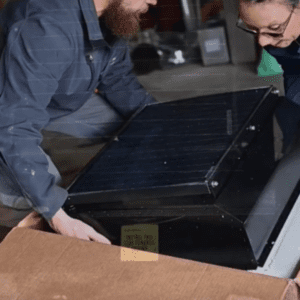 Yes! After your initial installation cost, it’s only savings and benefits from there on out!
Yes! After your initial installation cost, it’s only savings and benefits from there on out!
• Energy savings: Solar attic fans are powered by the sun, which means they don't rely on electricity from the grid. This can result in significant energy savings over time, especially during the summer months when attics can become hot and stuffy.
• Improved air circulation: Attic ventilation is important for maintaining the health and longevity of your home's roof, as well as preventing moisture buildup and mold growth. A solar attic fan can help improve air circulation by drawing fresh air into the attic and pushing hot, stale air out.
• Increased comfort: By reducing the temperature in your attic, a solar attic fan can also help make your home more comfortable during hot weather. One of the biggest complaints we hear is that it’s hot on a home’s second floor; a solar powered attic fan can significantly reduce the temperature swing between floors by taking the heat load off the upstairs!
How are they installed?
Solar-powered attic fans are typically installed by cutting a hole in the roof and securing the fan to the underside of the roof using brackets or screws. (This isn’t a job for a casual DIYer… you want a professional for this to ensure proper installation and prevent damage to your roof!) The fan is then connected to a solar panel which is mounted on the roof.
How much do attic fans cost to operate?
Not a dime! Once installed, the solar panel does all the work to power the fan and keep your attic cool!
Attic Fans in the Indianapolis Area
If you’re ready for an earth-friendly way to reduce cooling costs in your home and increase your comfort, contact us to learn more and to get a quote for installation!
Do Whole Home Dehumidifiers Really Work?
A whole home dehumidifier removes moisture from the air in your home. Unlike smaller, portable dehumidifiers that you manually move from room-to-room, a whole home dehumidifier is installed on the return duct of your HVAC unit to address the entire air volume of your home, not just one small area.
How does a whole house dehumidifier work?
Once installed on the return duct of your HVAC, the dehumidifier will remove moisture from all return air flowing back to your unit. As the air passes through the dehumidifier, a cooling coil will lower the air temperature. This causes water vapor in the air to condense into liquid form. The condensation will then drain out of the dehumidifier into a nearby drain. The remaining air exits the dehumidifier and enters your HVAC system for conditioning and then out into your home’s living areas via the HVAC blower fan.
 Will a dehumidifier remove all the moisture from the air?
Will a dehumidifier remove all the moisture from the air?
A dehumidistat on the unit will sense the air’s relative humidity level and remove moisture to decrease the airborne humidity to the desired levels indicated in your settings. We recommend the setting for this not be lower than 40% humidity. However, keep in mind that level may be hard to achieve in summer. Ideal humidity is 50%, but anything over 60% is going to be too high.
Do I need a whole home dehumidifier in Indiana?
Living in Indiana, the weather we have in the spring and early summer can be a bit unbalanced. It may only be 75 or 80 degrees outside, but the humidity can be at 80, 90, or 100%. So, while the air isn’t too hot, the humidity makes the air feel warmer than it is. This especially can be the case inside your home. Because it’s not as hot outside, your air conditioner may not be running as much as it would need to in order to remove all the humidity. So, the thermostat in your home may read 72 degrees, but if the humidity is high, it’s going to feel warmer than that. And many people think the answer to the high humidity is to turn the AC lower. But that’s not really going to help—a dehumidifier will.
A whole home dehumidifier is installed separate from your AC unit, so you don’t have to rely on the AC to run in order for the dehumidifier to do its job. Its sole purpose is to remove the sticky humidity from you home.
What are the benefits?
Better indoor air quality: High humidity levels can make your home feel muggy and uncomfortable. A dehumidifier can help create a more comfortable environment by reducing humidity levels and improving air quality. In addition to comfort disruption, high humidity levels can also lead to mold growth, dust mites, and other allergens. These can cause respiratory problems as well as potential damage to your home. Adding a whole home dehumidifier can make your more comfortable AND help you breathe easier!
Consistent climate control: Believe it or not, you may find you don't need to run the AC as much when you eliminate excess humidity from your house. This is all thanks to the cooling effects of the assist from the dehumidifier! By alleviating the stress of dehumidification, your air conditioner is able to cool your home more efficiently, which can result in lower cooling bills!
Dehumidifiers in the Indianapolis Area
If you’re tired of your home feeling muggy in the springtime or summer, contact us to learn more about whole home dehumidifiers and to get a quote for installation!
Do You Really Need Duct Cleaning?
When was the last time you had your ducts cleaned? If you can’t remember, or worse yet, think you’ve never had a duct cleaning in your home, it may be time to get one on the schedule.
Why should I have my ducts cleaned?
Many people don’t realize that duct cleaning is really an important part of regular home maintenance. This is for three reasons:
- Duct cleaning is a great way to improve the air quality of your home.
It removes all the dust and debris that has built up over time, which can help to reduce allergies, asthma, and other respiratory issues caused by dust. - Duct cleaning can also help get rid of built-up debris. If you’ve recently purchased your home, it’s a good idea to get those ducts cleaned! You never know what the former owners may have left in the ducts, unintentionally. We’ve found food, toys, pet hair… even a dirty diaper before!
- Duct cleaning can extend the life of your heating and cooling system and reduce maintenance costs. Clean ducts can keep air moving and require less work from your system to keep your home cool or warm!
Overall, duct cleaning is an important part of regular home maintenance that can provide many health and financial benefits.
What does duct cleaning involve?
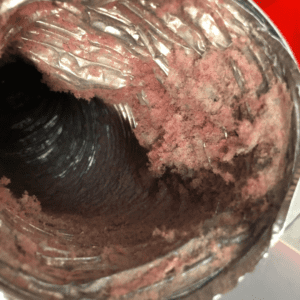 When you schedule a duct cleaning with LCS Heating and Cooling, we’ll arrive in our large box truck. This vehicle accommodates the large duct cleaning machine. Before we begin, we’ll lay drop cloths throughout your home to protect your floors through the cleaning process.
When you schedule a duct cleaning with LCS Heating and Cooling, we’ll arrive in our large box truck. This vehicle accommodates the large duct cleaning machine. Before we begin, we’ll lay drop cloths throughout your home to protect your floors through the cleaning process.
While we are cleaning your ducts, part of the machine will sit outside your home, while the rest will be in your home. To accommodate this dual location, your door will need to be partially open throughout the service.
Since the door will be partially open, we suggest you make sure pets are somewhere safe so they don’t escape during the process. If your pets are sensitive to noises, finding a temporary location for them outside the home could be a good idea. (If you’re working from home, a temporary relocation might be a good idea for you as well if you plan to be on calls or video chats when we’re scheduled to be at your home. The compressor makes some noise!)
Please note that your air conditioner or furnace will be off for the entirety of the service, which might be another reason you’d like to relocate, depending on outside temperatures! We recommend scheduling your service when temperatures are mild for this reason.
Once they start cleaning, the technicians will move throughout your home, cleaning out all ducts and cleaning return covers before replacing them. On average, the job will take a minimum of 3-4 hours, but sometimes longer, depending on the size of your home.
What can I expect after duct cleaning?
Once the job is complete, we’ll turn your air conditioning or furnace back on and remove the drop cloths from your home.
The machine we use captures 99% of the dust from your ducts, but some may escape into your home, which may require minimal dusting around your home a few days after the service as the dust settles.
You’ll also want to change your system filter within 7 days of the service.
For more on what duct cleaning looks like, check out our video:
Duct Cleaning in the Indianapolis Area
If you’re ready to breathe easier in your home, contact us today. You’ll reduce the dust and allergens floating around your home and help the efficiency and lifespan of your system.
